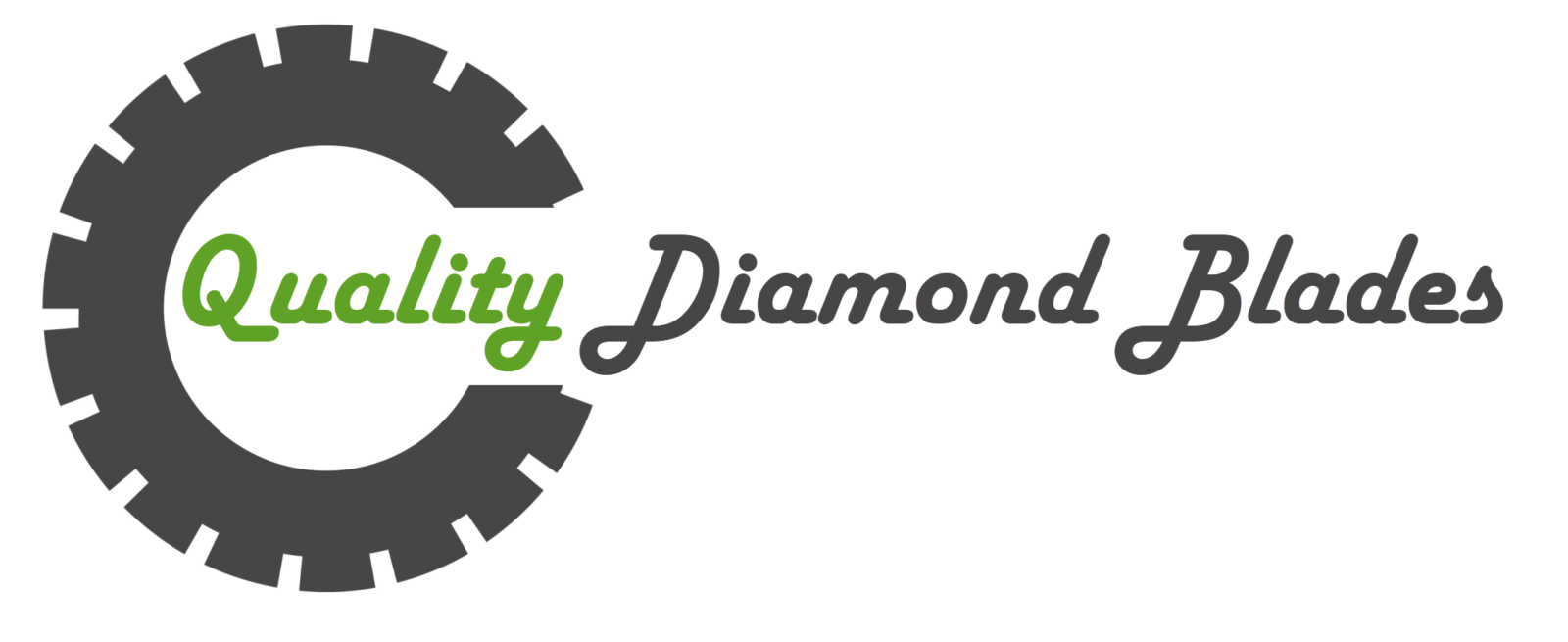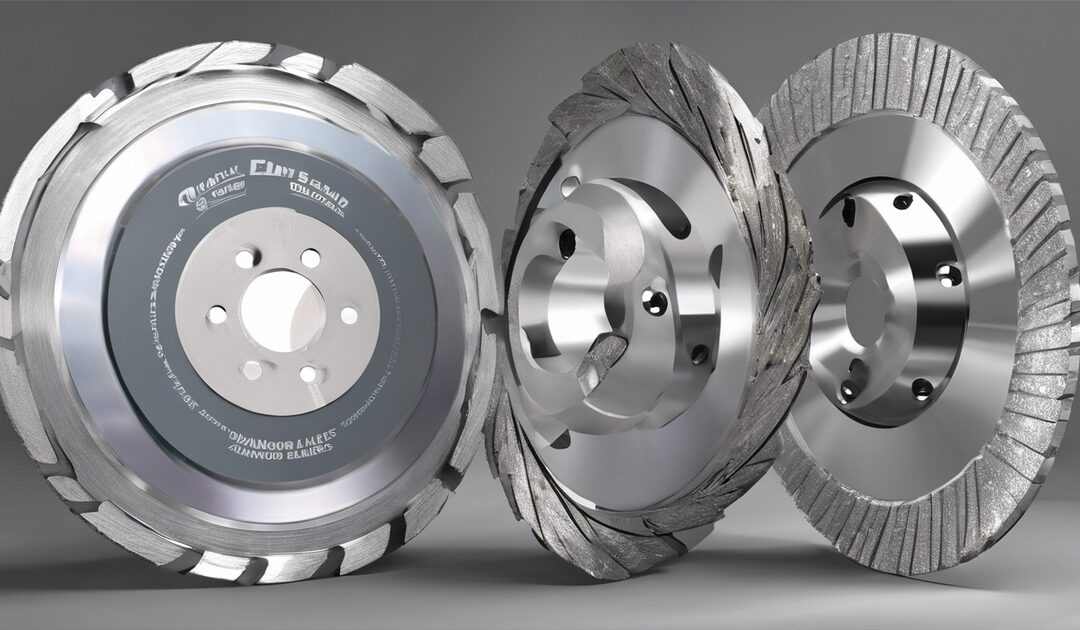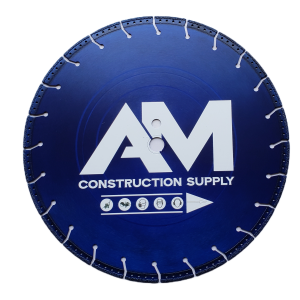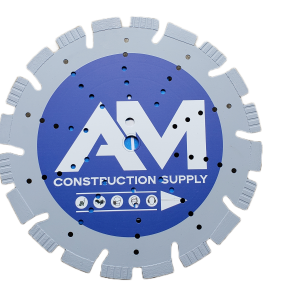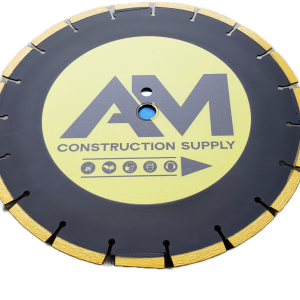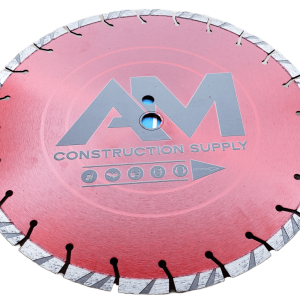In the world of construction and manufacturing, diamond blades are essential tools for cutting through tough materials. But have you ever wondered how speed, cutting forces, and wave velocity impact the durability of these diamond sawblades? Today, we delve into exploring the effects of speed on the longevity and performance of diamond blades. By understanding this relationship, professionals can optimize their cutting processes for efficiency and cost-effectiveness.
Speed is not just about getting things done quickly; it plays a crucial role in determining how long a diamond blade, used for sawing, will last before needing replacement. Join us as we uncover the fascinating insights into this critical aspect of diamond blade usage.
Key Takeaways
- Understanding Diamond Blades: Diamond blades are essential tools in construction and cutting applications due to their durability and precision.
- Speed and Durability Connection: The speed at which diamond blades operate directly impacts their durability and performance over time.
- Identifying Maximum Operating Speed: It is crucial to determine the maximum safe speed at which a diamond blade can operate to prevent overheating and premature wear.
- Factors Affecting Maximum Operating Speed: Various factors such as blade size, material composition, and manufacturer specifications influence the maximum operating speed of diamond blades.
- Optimizing Blade Performance: By selecting the appropriate operating speed, maintaining proper blade alignment, and using coolant, you can optimize the performance and lifespan of diamond blades.
- Safety Considerations: Prioritizing safety by wearing protective gear, following manufacturer guidelines, and conducting regular inspections can prevent accidents and ensure efficient blade operation.
- Tips for Identifying Maximum Operating Speed: Refer to the blade’s packaging, manufacturer instructions, and industry standards to accurately determine the maximum safe speed for your diamond blade.
Understanding Diamond Blades
Blade Components
Diamond blades have a steel core that serves as their foundation, providing strength and stability during cutting. The synthetic diamond crystals embedded in the blade’s segments are crucial for enhancing cutting efficiency by grinding through hard materials. The blade composition, including the type and quality of diamonds used, hardness, granite, stone, and cutting forces significantly impacts the blade’s durability and performance.
Cutting Mechanism
Diamond blades cut through materials by utilizing the hardness of diamonds to grind and slice. The interaction between blade design – such as segment shape and bond type – directly influences cutting efficiency and precision. Understanding the science behind the cutting process helps in optimizing blade performance for specific applications.
Blade Types
Different diamond blade types, including segmented, continuous rim, and turbo, cater to various cutting needs. Segmented blades are ideal for general-purpose cutting, continuous rim blades provide smooth cuts on delicate materials like tiles, while turbo blades offer faster cutting speeds for tougher materials like concrete. Each blade type has its specific applications based on material hardness and cutting requirements.
-
Pros:
- Segmented: Suitable for fast cuts in hard materials.
- Continuous Rim: Provides clean cuts without chipping.
- Turbo: Offers quick cutting speeds for challenging materials.
-
Cons:
- Segmented: May cause chipping on delicate surfaces.
- Continuous Rim: Slower cutting speed compared to turbo blades.
- Turbo: Not suitable for fine precision cuts.
Quality Diamond Blades Edge
A sharp edge is essential for diamond blades to achieve precise and efficient cuts. The quality of the blade directly impacts its sharpness and overall cutting precision. Maintaining a sharp edge enhances the blade’s longevity by reducing friction and ensuring consistent cutting performance over time.
Speed and Durability Connection
Speed Impact
Diamond blade durability is directly influenced by the operating speed. Higher speeds can lead to increased cutting efficiency, but they also accelerate wear and tear on the blade. Conversely, lower speeds may offer better longevity and reduce wear rate but at the cost of reduced performance.
When operating diamond blades at high speeds, the friction generated can cause heat buildup, leading to faster degradation of the blade’s cutting edge. On the other hand, running blades at low speeds might result in slower cutting rates and less precise cuts due to inadequate friction.
Durability Factors
The durability of diamond blades, sawing through granite, is affected by various factors, including their material composition. Blades made from higher quality diamonds and a stronger bond matrix tend to last longer under normal operating conditions. The design and manufacturing process play crucial roles in determining a blade’s lifespan.
The cutting technique employed also plays a significant role in determining how long a diamond blade will last. Proper usage techniques such as maintaining consistent pressure and avoiding excessive twisting during cuts can significantly extend the blade’s durability.
Speed Limits
It is essential to adhere to recommended speed limits when using diamond blades to ensure optimal performance and longevity. Exceeding these limits can cause excessive heat generation, leading to premature wear and potential damage to the blade structure.
Variations in speed can impact cutting performance significantly. Inconsistent cutting rates can result in uneven cuts, chipping, or premature dulling of the blade. Therefore, maintaining a consistent and appropriate operating speed is crucial for maximizing both cutting efficiency and blade lifespan.
Identifying Maximum Operating Speed
Blade Specifications
Blade specifications, cutting rate, and wear play a crucial role in optimizing performance and ensuring the longevity of diamond blades. Understanding these specifications is key to maximizing the efficiency and safety of cutting operations. By interpreting manufacturer’s specifications, users can determine the ideal operating conditions for their diamond blades, including the maximum speed at which they can safely operate. This information helps prevent overheating, premature wear, and potential damage to the blade.
- Importance of blade specifications in optimizing performance
- Interpreting manufacturer’s specifications for diamond blades
- Role of blade specifications in ensuring safety and efficiency
Testing Methods
Various methods are employed to test the durability of diamond blades and validate their quality and performance. These testing procedures are essential in determining how well a blade can withstand different cutting materials such as granite and conditions. Rigorous testing helps users select the right diamond blade for specific applications, ensuring reliability and longevity. By understanding these testing methods, users can make informed decisions when choosing a diamond blade for their cutting needs.
- Dry cutting test
- Wet cutting test
- Drop segment hammer test
Quality Diamond Blades Standards
Industry standards exist to ensure that diamond blades meet specific quality criteria for optimal performance and durability. These standards outline requirements related to blade composition, design, manufacturing processes, and performance metrics. Certification processes are in place to verify that diamond blades comply with these standards, providing users with assurance regarding the reliability and quality of the product they are purchasing. Adhering to these quality standards is essential for achieving consistent and high-quality cutting results.
- Industry standards for quality diamond blades
- Certification processes ensuring blade reliability
- Importance of adhering to quality standards for optimal cutting results
Factors Affecting Maximum Operating Speed
Material Hardness
Material hardness significantly influences blade durability. Different materials necessitate specific blade hardness levels for optimal performance. Understanding this relationship enhances cutting efficiency.
Blade hardness tailored to material properties ensures prolonged durability. For instance, softer materials like asphalt demand a different blade hardness compared to harder substances like concrete. This specificity maximizes blade lifespan.
Blade Diameter
Blade diameter directly impacts cutting speed and overall performance. Selecting the appropriate blade diameter is crucial for achieving desired results in various tasks. The right diameter enhances cutting precision significantly.
The relationship between blade diameter and cutting precision is intricate. Larger diameters generally allow for faster cutting speeds but might sacrifice precision, while smaller blades offer greater accuracy but may compromise speed in certain applications.
Cooling Techniques
Effective cooling mechanisms are essential to prevent blade overheating during operation. Maintaining an optimal temperature through cooling is vital for sustaining peak blade performance throughout its lifespan.
Cooling techniques play a pivotal role in optimizing cutting efficiency by ensuring consistent heat dissipation. Water cooling systems, air-cooling methods, and specialized lubricants are among the strategies employed to enhance blade longevity and performance.
Optimizing Blade Performance
Proper Installation
Proper installation of diamond blades is crucial for ensuring safety and maximizing their lifespan. Incorrect procedures can lead to inefficiency and compromise the blade’s durability. Understanding the significance of precise installation techniques is essential in preventing accidents and maintaining cutting performance.
Improper installation not only affects saw performance but also accelerates wear on the blade, reducing its overall effectiveness. By following the correct procedures, users can minimize risks and optimize the blade’s longevity. Investing time in learning about proper installation methods can significantly impact the efficiency and wear performance of diamond blades.
Speed Adjustments
Adjusting blade speed to match equipment RPM is vital for achieving optimal cutting results. Understanding how different speeds impact cutting efficiency is key to enhancing overall performance. Precise adjustments ensure that the blade operates at its most effective level, contributing to extended longevity and improved cutting outcomes.
Matching speed with equipment specifications allows users to maximize the effective segment area of diamond blades, leading to smoother cuts and increased productivity. The importance of fine-tuning speed settings cannot be overstated when aiming for consistent cutting quality and prolonged blade life. By mastering speed adjustments, operators can unlock the full potential of their blades.
Maintenance Tips
Regular maintenance practices play a significant role in extending the lifespan of diamond blades. Implementing essential maintenance routines not only enhances cutting performance but also safeguards the integrity of the blade over time. By prioritizing upkeep, users can prevent premature wear and maintain peak saw performance throughout extended periods of use.
Proper maintenance contributes to preserving the quality of diamond blades, ensuring that they remain sharp and efficient for longer durations. Routine inspections, cleaning, and lubrication are essential steps in prolonging blade life, reducing wear, and optimizing cutting outcomes. Embracing maintenance tips as part of standard operating procedures can result in cost savings and improved overall efficiency.
Safety Considerations
Protective Gear
Using diamond blades requires recognizing the significance of Personal Protective Equipment (PPE). This gear plays a crucial role in preventing injuries during cutting tasks. Different types of PPE, such as safety glasses, gloves, and ear protection, are recommended for safe cutting operation.
When it comes to operational precautions, it is essential to learn about the necessary measures when cutting with diamond blades. Before starting any cutting task, operators must prioritize equipment inspection. Following safety guidelines can help minimize risks during blade operation, ensuring a secure working environment.
Operational Precautions
Before utilizing diamond blades, it is vital to understand emergency procedures in case of blade-related incidents. Being prepared for unexpected situations is of utmost importance to ensure swift and effective responses. Knowing the steps to take in emergencies can significantly contribute to maintaining safety standards.
Tips for Identifying Maximum Operating Speed
Read Labels
When examining diamond blade labels, look for crucial information such as maximum operating speed and blade diameter. It’s vital to follow the manufacturer’s instructions precisely to ensure safe and efficient blade usage. By reading labels, users can access key details essential for optimal performance and longevity.
Consult Experts
Seeking advice from professionals in diamond cutting tools can be highly beneficial. Experts can provide valuable insights on selecting the right blade based on specific cutting needs. Their guidance helps users optimize cutting performance and avoid potential risks associated with incorrect blade usage.
Quality Diamond Blades Support
Reputable diamond blade manufacturers offer various support services to their customers. Reliable customer support is crucial for addressing any concerns or queries related to blade usage promptly. Choosing brands that prioritize comprehensive support ensures users receive assistance whenever needed.
Closing Thoughts
You’ve delved into the intricate world of diamond blades, understanding how speed impacts their durability. By identifying the maximum operating speed, optimizing performance, and considering safety measures, you’re now equipped to make informed choices for your cutting needs. Remember, a well-maintained blade used at the right speed not only enhances efficiency but also ensures longevity.
As you venture into your next cutting project, keep these factors in mind to maximize blade lifespan and performance. Your awareness and application of the insights shared here will not only save you time and money but also elevate the quality of your work. Stay sharp, stay safe, and let your diamond blade be the shining star in your cutting endeavors!
Frequently Asked Questions
Is speed a crucial factor in determining the durability of diamond blades?
Yes, speed plays a significant role in the durability of diamond blades. Operating at the correct speed ensures optimal performance and longevity of the blade.
How can I identify the maximum operating speed for my diamond blade?
To identify the maximum operating speed of your diamond blade, refer to the manufacturer’s guidelines or markings on the blade itself. Exceeding this speed can lead to reduced durability and safety risks.
What factors influence the maximum operating speed of a diamond blade?
Several factors affect the maximum operating speed of a diamond blade, including material composition, blade size, and intended application. Understanding these variables is crucial for optimizing performance and ensuring longevity.
How can I optimize the performance of my diamond blade?
You can optimize your diamond blade’s performance by using it at the recommended speed, ensuring proper water flow for cooling, and avoiding excessive pressure during cutting. These practices help maintain the blade’s sharpness and extend its lifespan.
Why are safety considerations important when using diamond blades?
Safety considerations are paramount when using diamond blades due to their high rotational speeds and potential for kickback or breakage. Following safety guidelines helps prevent accidents and ensures a secure working environment for operators.
